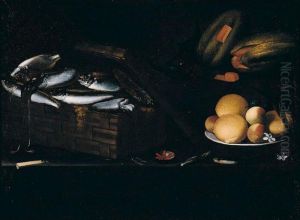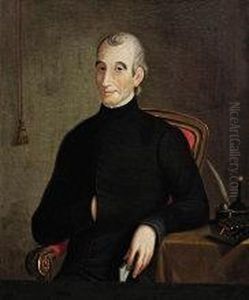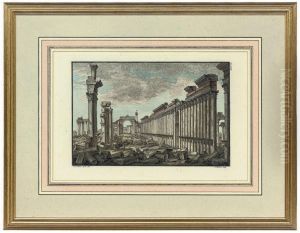Giovanni Battista Borra Paintings
Giovanni Battista Borra was an Italian architect, engineer, and draughtsman, born in 1713 in Dogliani, Piedmont, which was part of the Kingdom of Sardinia at the time. He is best remembered for his work as an architect and for his detailed architectural drawings, which have been of significant interest to historians studying the architecture of ancient and 18th-century buildings. Borra's contributions to architecture were not limited to designs and constructions; he was also an avid traveler and an exceptional draughtsman, whose works provided invaluable insights into the architectural styles and structures of his time.
After studying architecture in Turin, Borra embarked on a significant journey that would mark a pivotal point in his career and contributions to architectural history. In 1739, he joined the British scholar and traveler Robert Wood on an expedition to the Eastern Mediterranean, particularly focusing on the antiquities of Palmyra and Baalbek. This journey was instrumental in the documentation of ancient ruins; Borra's precise and detailed drawings captured the imagination of the European public and played a crucial role in the neoclassical architectural revival in Europe. His drawings were later published in Wood's influential works, 'The Ruins of Palmyra, otherwise Tedmor, in the Desart' (1753) and 'The Ruins of Balbec' (1757), which contributed significantly to the spread of classical architectural ideals.
Upon his return to Italy, Borra continued to work as an architect and engineer, applying the knowledge and inspiration he had gained from his travels to his designs. His style was marked by a blend of classical principles with contemporary needs, making his works stand out among those of his peers. Unfortunately, despite his contributions and the importance of his works, Giovanni Battista Borra is not as widely known today as some of his contemporaries. He passed away in 1770, leaving behind a legacy that is cherished among architectural historians and scholars for its insight into both ancient and 18th-century architectural practices. Borra's works remain a testament to his skills as an architect and draughtsman, and his journey with Robert Wood continues to be celebrated for its impact on the revival of classical architecture in Europe.


